The OnePlus 6 Review: Among The Best Of 2018
by Andrei Frumusanu on July 27, 2018 8:30 AM EST- Posted in
- Mobile
- Smartphones
- OnePlus
- OnePlus 6
Display Measurement & Power
The OnePlus 6 comes with a 6.22” diagonal 19:9 Samsung AMOLED screen sporting a 2280 x 1080 resolution. The first impressions of the screen are generally excellent, be it that the resolution is quite stretched at this large size.
There’s no Android 8.1 colour management available for the screen, while it does support simple HDR content. OnePlus instead relies of various pre-defined colour profiles which can be found in the display settings:
The default mode is a very saturated wide gamut mode not particularly targeting any specific colour space. The firmware provides two accurate modes options representing the sRGB and DCI-P3 colour spaces. The Adaptive mode is also very much a viable alternative that again isn’t accurate to any standard, but comes with good compromises between higher colour saturation and more accurate skin tones.
As always, we thank X-Rite and SpecraCal, as measurements are performed with an X-Rite i1Pro 2 spectrophotometer, with the exception of black levels which are measured with an i1Display Pro colorimeter. Data is collected and examined using SpectraCal's CalMAN software.

Standard (sRGB)
DCI-P3 Adaptive
Starting off with the greyscale measurements we see that the screen fares quite well in terms of accuracy, albeit the colour temperature both in the sRGB and DCI-P3 modes are slightly too warm coming in at 6350K; the Adaptive mode is the only one which comes in at perfect whites of 6586K resulting in one of the bets greyscale dE2000 scores at 1.15.
 SpectraCal CalMAN
SpectraCal CalMAN
sRGB Greyscale Comparison
 SpectraCal CalMAN
SpectraCal CalMAN
Adaptive Greyscale Comparison
In terms of brightness, the screen goes up to a maximum of 420cd/m² in manual mode which is essentially standard for what we’ve seen over the years in terms of AMOLED screens. The more disappointing discovery here is that there’s no high brightness mode under default conditions and it can only be enabled at low-level driver interfaces. In effect this puts the OnePlus 6 at a visible brightness disadvantage in bright conditions, not least because of the lack of raw brightness, but also because it’s not adapting to the artificial low gamma and high saturation colour profiles that that vastly improves sunlight legibility usually found in other AMOLED devices.
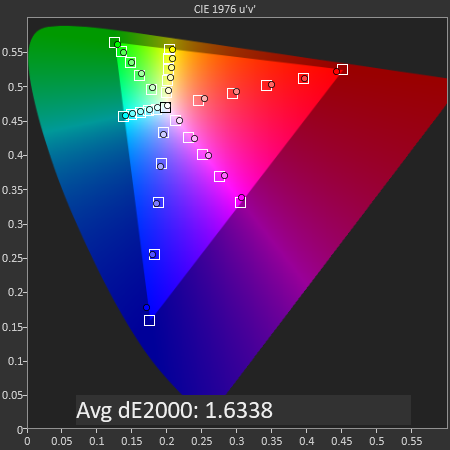
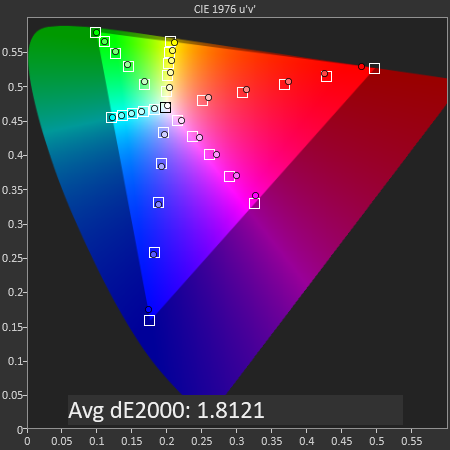 SpectraCal CalMAN
SpectraCal CalMAN
sRGB Mode / DCI-P3 Mode
The gamut and saturations accuracies for the sRGB and DCI-P3 modes are excellent, with only very slight deviations most prominent in magenta colours. In the DCI-P3 mode it also looks like OnePlus undershot the maximum chromacity for reds as it doesn’t quite reach the full gamut of the colour space – there’s also slight oversaturations in both profiles at the lower red levels meaning the colour compression on that channel is perfectly linearly configured.
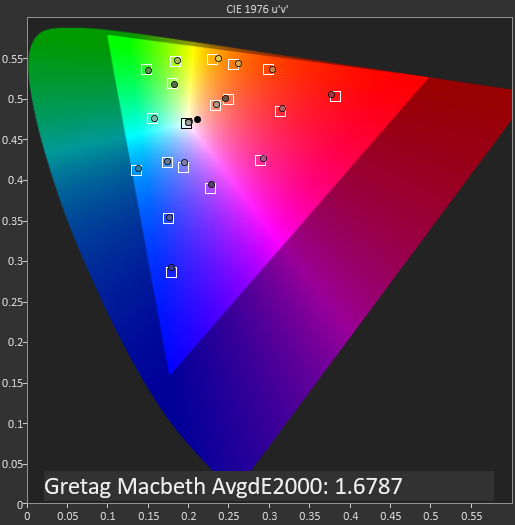
 SpectraCal CalMAN
SpectraCal CalMAN
sRGB Mode / DCI-P3 Mode
In the Gretag Macbeth charts which showcase common colour tones, both sRGB and DCI-P3 profiles perform very well with dE2000 of 1.67 and 1.87, while not perfect, it will be mostly unperceivable to most users in daily usage.
 SpectraCal CalMAN
SpectraCal CalMAN
sRGB GMB Comparison
 SpectraCal CalMAN
SpectraCal CalMAN
DCI-P3 GMB Comparison
The Adaptive mode is again extremely interesting as it doesn’t really adhere to any one colour space, and it’s something we most recently saw implemented in the MIX 2S; it’s a wide gamut colour space (DCI-P3), however skin tones are mapped to the sRGB space. This gives best compromise of bringing vivid colours to objects while attempting to display accurate skin tones. Given that this mode also has the single best pre-defined white-point, I think it’s generally the best alternative for most users.

SpectraCal CalMAN
Adaptive GMB Comparison
Overall the OnePlus 6 is an excellent screen with only two weaknesses; one of not having a high brightness mode at disposal to the user even though the hardware is capable of it, and the second point being that the resolution of the screen being rather stretched out for its form-factor.
In past OnePlus as well as most recent devices reviews we’ve brought up the point of resolution several times; as we’ll see in the battery life section there is effectively no disadvantage to 1440p AMOLED screens in terms of power as their emissive nature isn’t really affected by luminosity power efficiency deficiencies at higher resolutions the same way LCDs are, and the computational overhead of the higher resolution seems to be minimal.
What a 1440p screen would greatly differ in though is pricing, and here maybe OnePlus just isn’t ready to justify the increased component cost for devices that aim to be the best possible value.



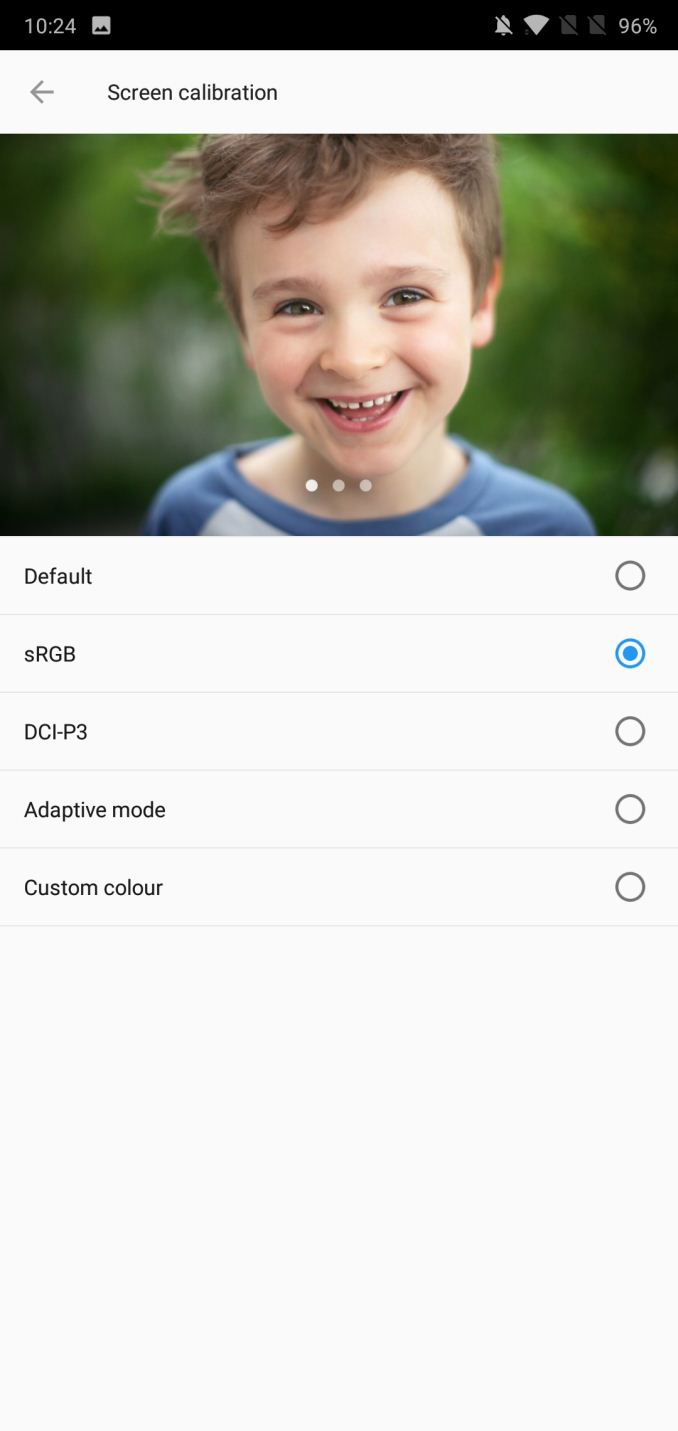
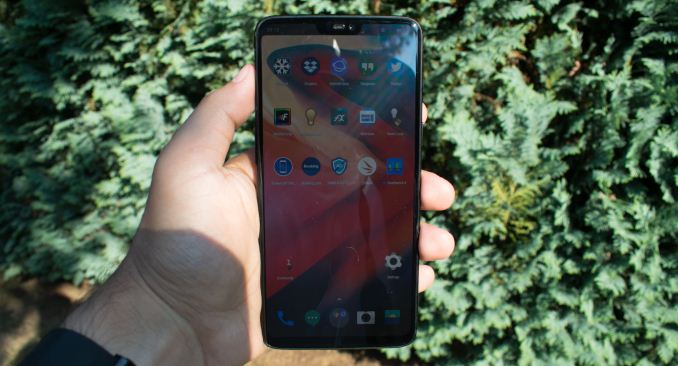
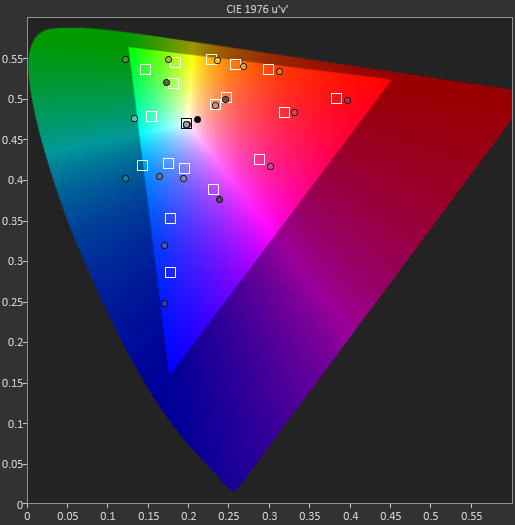








90 Comments
View All Comments
jospoortvliet - Thursday, August 2, 2018 - link
On screen buttons, really? the 90's want you back... Nokia n9 and Palm WebOS showed the future years ago, it is a bloody shame it took Apple to bring it to Android. Very disappointing to notice so clearly that Google only innovated when forced, even though the better paradigm was already shown to work and just lying there to be adopted..Thefinn - Friday, July 27, 2018 - link
Yeah, notch makes it useless. I don't think so.What are you smoking? It's actually a great phone, but to each his own
amosbatto - Wednesday, August 22, 2018 - link
The problem with the notch is that it gives less space for the notification icons, which I find useful. Even worse is that 19.5:9 screens leave no room for front-facing speakers. Decent audio is far more important than more vertical pixels which I will never use. Also, the smaller the bezel, the less protection for the screen. Of course, when you make phones entirely wrapped in glass, you basically are inviting for it to be cracked. Unfortunately, nobody makes a decent phone like the LG V20 anymore, that is durable and designed to survive drops.128bit - Friday, July 27, 2018 - link
I'm using s9 plus and iphone x and nope screen of s9 plus might be has higher resoulation and excellent brghtiness, but still not as good as iphone x OLED there's black crash at low brightness even though its made by samsung. Apple knows how to calibrate there screen very well and notch isn't on iphone x like android phones wanna be iphone.id4andrei - Saturday, July 28, 2018 - link
The problem you're referring to is an Android problem and that is the lack of a proper color management system. Samsung has color profiles corresponding to different standards such as sRGB or AdobeRGB built in but it's not a full solution.Skelter - Friday, July 27, 2018 - link
After one month with the phone, I don't get the notch hate that seems to be trending in all tech related sites. There's really no downside to it. It hides on its own when needed and gives you extra screen space over what would have been otherwise a bezel. If you really hate how it looks, you can just hide it and the device will look like it was made with the same bezels the S9+ has.The only downsides the phone has, in my opinion, are the speaker (not bad, but not flagship worthy either), the glass back without wireless charging (not a deal breaker at all, but it would have been nice to get either Wireless Charging or a tougher design) and the camera (which is, at least since the last update improved its quality, almost as good as Pixel 2/iPhone X/S9).
By the way, I wouldn't say Samsung's S9 has "nearly the same price". Even if you buy the cheapest S9 model Samsung is offering, there's still a $140 difference. Maybe it's worth it for some, since its screen is the best there is (even if it is smaller in the basic S9 model), its camera is slightly better and it has Wireless Charging and an IP68 rating. But that doesn't make OP6 a bad choice at all.
johnhopf - Friday, July 27, 2018 - link
Your review is great, but I really object to this kind of camera evaluation.The only way you can take a decent landscape shot with the sky in it, is if the sun is setting behind you so the sky in front of you is dark and the scenery is illuminated.
When you take a photo of midday sky and trees underneath it, the sky is probably 50 times brighter than the trees, and the only way to bring them in line is insane over-the-top "hdr" that gives the whole image the same mezzo-blah brightness.
I'd recommend looking at real art photography for a while, to see how the shadows actually clip into blackness. My favorite photographer lately is Jay Maisel, and he has lots of good photos on his website.
Andrei Frumusanu - Friday, July 27, 2018 - link
> When you take a photo of midday sky and trees underneath it, the sky is probably 50 times brighter than the trees, and the only way to bring them in line is insane over-the-top "hdr" that gives the whole image the same mezzo-blah brightness.> I'd recommend looking at real art photography for a while
Sorry to be blunt here, but most people don't care about art photography. The notion that you can only take a picture with the sun behind you is also outdated, the average person is not going to follow any of that advice. On the day I took those pictures I had dozens of tourists around me taking the pictures with their smartphones, for those people, they expect the smartphone to just deal with the circumstances.
The point of these comparisons is to put the phone into difficult situations and see how they behave. Computational photography is very much a thing and it opens up new avenues. Look at the bridge photo of the P20Pro - it manages to do that because it has the technology in the sensor to do a different exposure for each physical pixel in the binned logical pixel, resulting in outstanding DR. Also as demonstrated by the OP6 here and some other phones, the results can actually be quite good if the HDR is well tuned.
If one phone manages to do well then it means it raises the bar in terms of what's to be expected of other flagship devices in general.
FunBunny2 - Friday, July 27, 2018 - link
if memory serves, Maisel has been using a view camera and contact printing for rather a long time. in any case, the dynamic range of film, using zone method, beats any minuscule phone sensor by a light year or so. but, just like the Kodak of the 1940s, phone snapshots aren't intended to be anything more than momentos. even a $100 digital camera will do better.Impulses - Tuesday, July 31, 2018 - link
I'd be surprised if any camera <$400 did better than a phone tbh, under that price bracket they'd feature the same miniscule sensors and often slower lenses (possibly better corrected and definitely able to stop down, but it's debatable how much you really need to stop down for DoF with these small sensors).Meanwhile smart HDR/stacking algorithms will definitely give phones an edge, these modes tend to suck even in high end cameras and photography enthusiasts just do it manually in post. Past $400 or so cameras definitely jump ahead tho, at that point you can easily buy something with a 1" (Canon G9 X) or even 4/3 sensor (Panasonic GX850).
Obviously these are not exactly $400 phones either, even the OP has blown significantly over that threshold, but still... I'm all in favor of suggesting people look at cameras rather than side-grading phones for marginal gains tho. I was impressed by my Pixel but I didn't buy it for the camera and still vastly prefer my dedicated cameras.